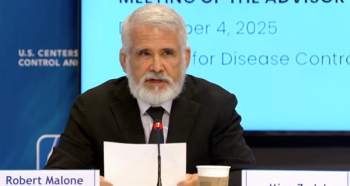
Morale deteriorates in medical profession as doctors deal with staffing challenges, administrative burdens
‘Devastating effects’ showing up in primary care, according to latest findings by The Physicians Foundation.
Staffing challenges and administrative burdens are increasing as morale plummets among doctors.
“Before the pandemic and now, regulations and compliance have changed the landscape of physician practice – resulting in an environment that has negatively impacted physicians’ ability to deliver patient care and their overarching outlook on the profession,” Physicians Foundation President
Primary care problems
The survey listed the top four challenges affecting primary care’s role in providing high-quality, cost-efficient health care:
- 85% reported administrative burdens, such as electronic health records and prior authorizations
- 70% said lack of insurance for patients
- 64% reported not prioritizing mental health integration as a challenge
- 63% said pay-for-performance measurements were a top challenge
“Reductions in staff, administrative burdens, prior authorization and concerns with reimbursement have had devastating effects on primary care physicians and their practices.” Physicians Foundation CEO Robert Seligson, MBA, MA, said in a news release. “We must acknowledge the critical role primary care plays in enhancing access to care and improving outcomes for patients and prioritize implementing solutions.”
Strategic solutions
- What would improve patient access and outcomes in primary care? Physicians rated seven strategies:
- 86% supported reimbursement for responding to questions through emails, texts, or telephone calls
- 84% supported partnerships for preventive health discussions with critical populations, such as rural and low-income communities
- 76% want to re-evaluate reporting requirements to align with delivering quality care
- 72% supported more flexibility to provide services outside typical work hours.
Other strategies include more remote patient monitoring to track patient health (66%); increasing frequency of telehealth visits to connect with patients (61%); and prioritizing nonlinear patient conversations during visits to determine treatments through a holistic patient approach (54%).
Support staff needed
It appeared staff shortages could be the next epidemic sweeping through physicians’ practices. The respondents reported shortages of registered nurses (90%), nursing assistants (86%), social workers (85%), physicians (84%), and licensed practice nurses (83%).
There were 10 proposed solutions to address staff shortages, and the percentage of physicians reported the most helpful are:
- 94% - Removing low-value work, including reducing EHR clicks and minimizing inbox notifications
- 92% - Eliminating insurance approvals such as pre-authorizations
- 92% - Offering customized retention strategies, such as added pay, paid time off, and paid sabbaticals
- 89% -
Addressing burnout among physicians and support staff
Other potential solutions included identifying patient visits to conduct by telehealth (80%); pre-registering patients by online portals (77%); tailoring schedules to engage younger generations (77%); conducting pre-visit planning for patient appointments (76%); providing professional development to reskill the existing workforce (75%); and grouping similar appointment types together (56%).
Apart from taking care of patients, physicians and their supporters have their work cut out to change the U.S. medical system.
“There is extensive action needed on the systemic, structural, organizational and policy level to improve the state of physician practice in 2023 and beyond,” said Seligson. “As much as we are at a worrisome inflection point, we now know where we stand and how we can spur action and drive change, so we can preserve our health for today and tomorrow.”
Newsletter
Stay informed and empowered with Medical Economics enewsletter, delivering expert insights, financial strategies, practice management tips and technology trends — tailored for today’s physicians.















